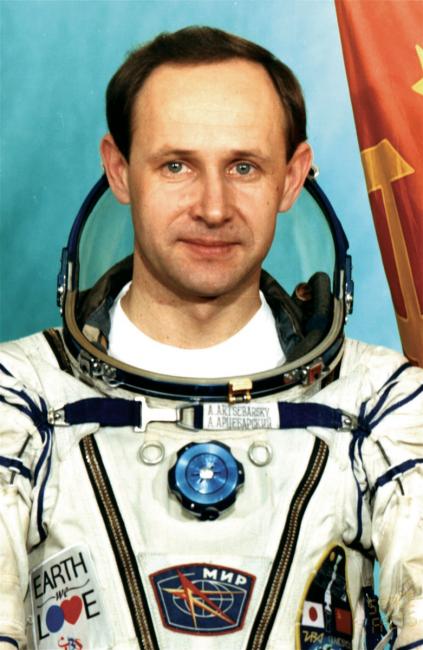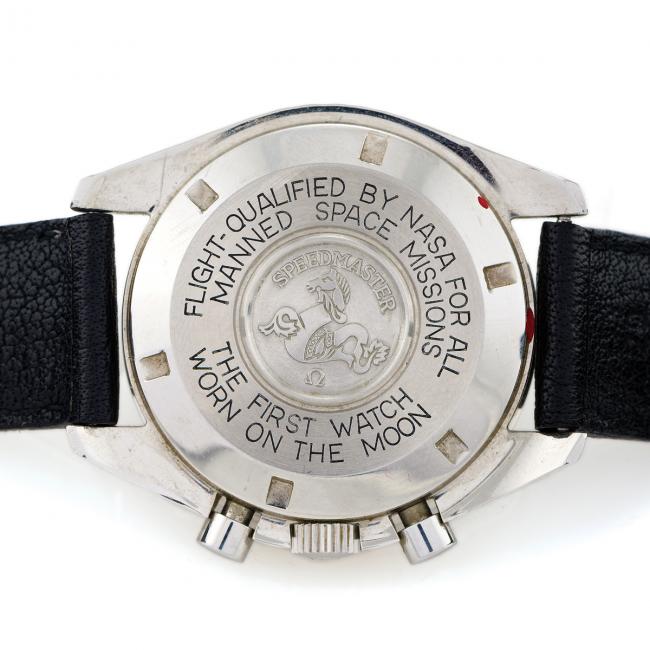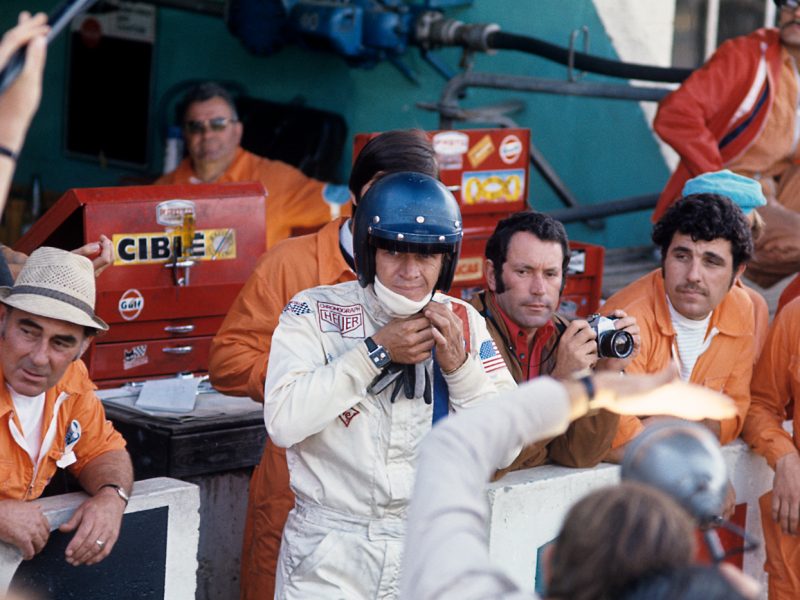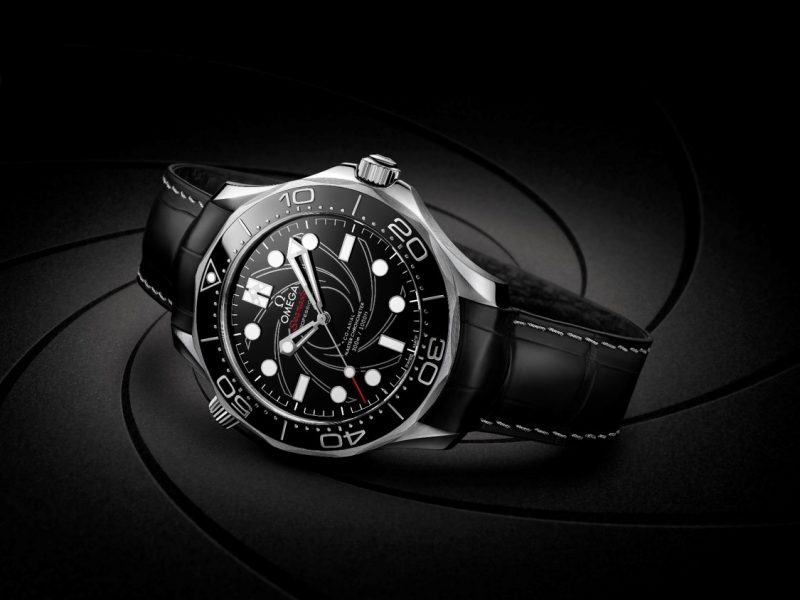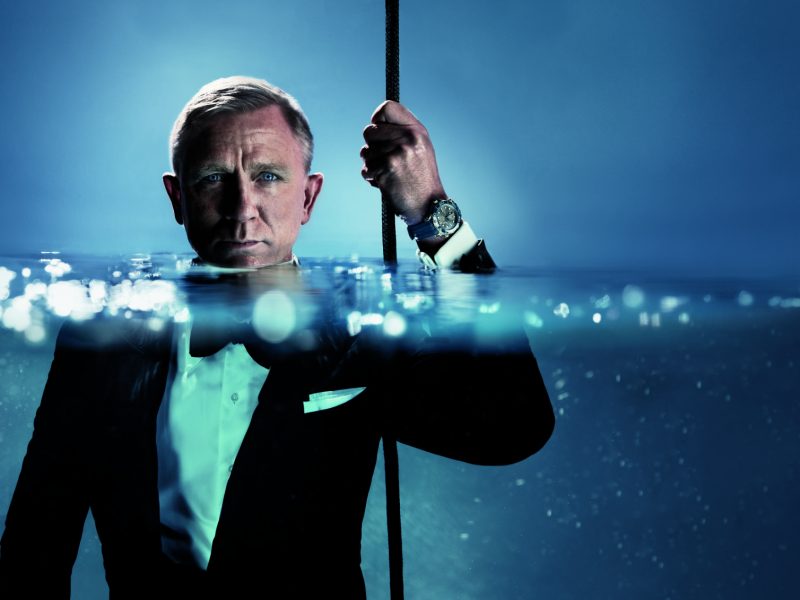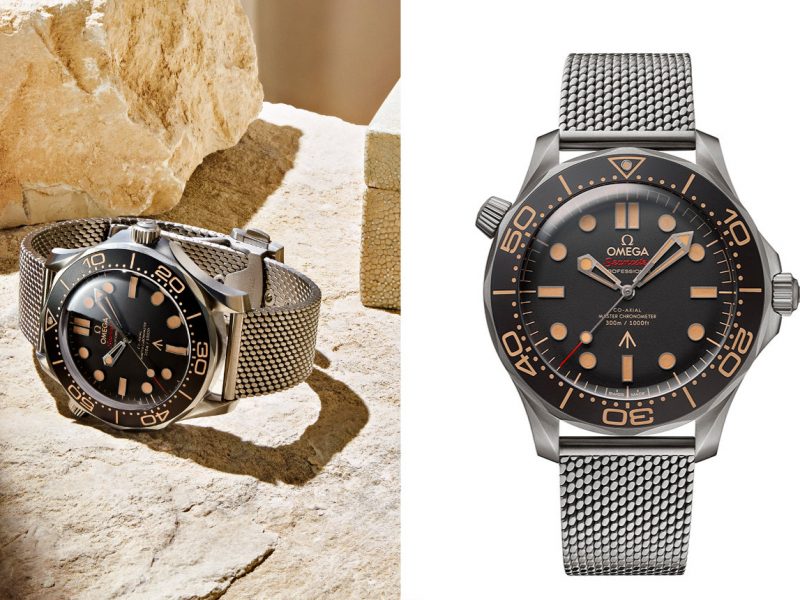Rare record-breaking & historically significant watch up for auction this weekend
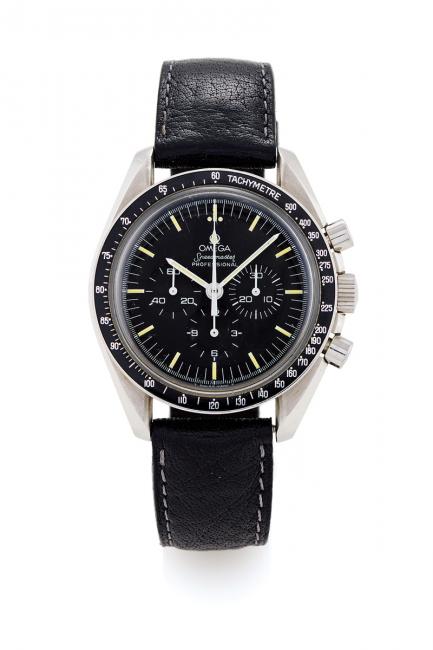
Russian cosmonaut Anatoly Artsebarsky’s Omega Speedmaster has spent more time in open space than any other watch.
This Sunday (November 10th), at the prestigious Antiquorum Auction in Geneva, a ‘flown’ Omega Speedmaster watch is being offered for sale. ‘Flown’ Speedmasters are rare as they have to have been worn in deep space and they seldom reach the open market. This one, No. 48261214, is especially coveted as it has spent more time in open space than any other watch – a total of 33 hours – making it a uniquely historic timepiece.
Its historic significance is further amplified by the fact that it was once owned by Ukrainian–born Russian cosmonaut, Anatoly Artsebarsky.
Artsebarsky was the 35-year-old commander of Soyuz TM-12, leading the first joint Russian-British space mission in 1991. Helen Sharman, the first Briton in space, took off with him, along with Sergei Krikalev, who to this day holds the record for most time spent in space. Artsebarsky spent five months (145 days) at the MIR Space Station undertaking various projects and repairs and he wore his Omega Speedmaster on an unprecedented six EVAs (Extra Vehicular Activities) – or space walks – totaling 33 hours. While orbiting the Earth in August that year, history was being made below and the cosmonauts were all but forgotten in the chaos. Gorbachev was under house arrest in Russia and a coup was underway, attempting to overthrow his government. After three tense days the coup was quashed and order was restored – as well as contact with Artsebarsky – although the uprising did set in motion the events that led to the end of the Soviet Union on 1 January 1992.
By the time he arrived back on Earth in October, a number of former Soviet states had declared their independence and the USSR that Artsebarsky had left in May had changed forever. Immediately upon his return from space, Artsebarsky was made a Hero of the Soviet Union and given the Order of Lenin (both among the last ever such awards given), as well as being made a Pilot-Cosmonaut of the USSR and receiving the Medal for Merit in Space Exploration.
Artsebarsky’s Omega Speedmaster is in good condition and still works perfectly. It is currently owned by a British financier and has all the necessary authentication, as well as a box signed by the cosmonaut himself, so is expected to attract a great deal of interest at auction. In addition to watch and space memorabilia collectors, it is anticipated that Russian and Ukrainian nationals, keen to own a rare piece of their recent history, will also bid on the watch. Historical significance and previous owners are increasingly important at watch auctions: in the past few years watches with interesting owners and/or backstories have sold at auction for anywhere between $10,000 and $2million. Artsebarsky’s watch has a pre-auction estimate of CHF 20,000-40,000.
Julien Schaerer, managing director of Antiquorum Auctioneers comments: “It’s not every day that such a rare and historically significant watch is made available for auction, so we are delighted that Antiquorum has been chosen to represent Artsebarsky’s Omega Speedmaster. We are hopeful that its provenance, history and condition will make it one of the highlights this weekend, where we have more than 600 lots and some truly stunning timepieces on offer.”
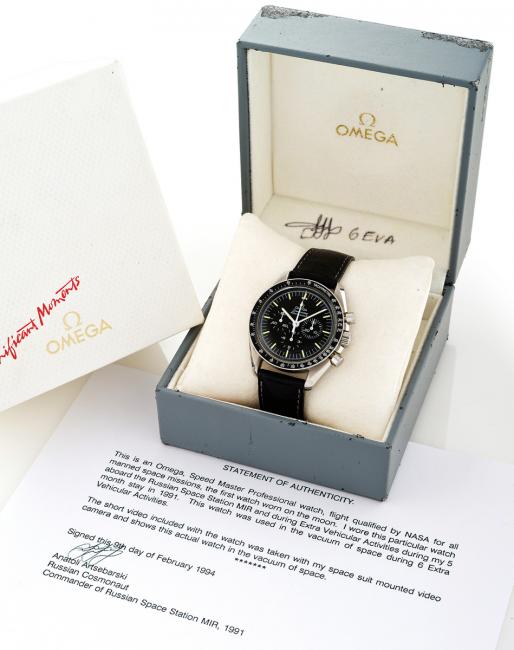
The Artsebarsky Omega Speedmaster has all the necessary authentication, as well as a box signed by the cosmonaut himself.
The Omega Speedmaster in Space
A Speedmaster was first reported to have been worn in space by Wally Schirra aboard Mercury-Atlas 8 in 1962. Three years later it was just one of a number of watches from different companies that were tested by NASA under extreme conditions of temperature, pressure, vibration and noise. The evaluation concluded in March 1965, with the selection of the Omega Speedmaster as the perfect watch for space missions. Manual, as automatically winding watches do not work without gravity, it survived all the tests while remaining largely within five seconds per day rate.
Gus Grissom and John Young wore the first officially qualified Speedmasters on Gemini 3 on March 23, 1965. Several months later, Ed White made the first US space walk during Gemini 4 with a Speedmaster strapped to the outside of his spacesuit. This EVA (Extra Vehicular Activity) was widely used in Omega’s subsequent marketing for the Speedmaster and the EVA count has since become a significant factor in evaluating these historical timepieces. Watches worn outside vehicles in deep space remain very rare.
Speedmasters were used throughout the early manned Apollo space missions and finally reached the moon, along with man, on Apollo 11. Neil Armstrong actually left his Speedmaster inside the lunar module as a backup after the module’s electronic timer had malfunctioned, but Buzz Aldrin wore his and the Speedmaster made history by being the first watch worn on the moon – and since then has been known as the Moon Watch. It continued to play a significant role in space history, even providing the critical timings for the mid-course correction for Apollo 13, which allowed for the crew’s safe return. NASA has tested various upgrades and developments to the Speedmaster over the years and it has remained the definitive watch for astronauts and cosmonauts. Even today, the Moon Watch is being worn by expedition crews at the International Space Station – and indeed has been by every crew since the arrival of Expedition 1 in November 2000
The Auction
Artesbarsky’s Omega Speedmaster is being auctioned by Antiquorum Auctioneers at the Mandarin Oriental Hotel in Geneva, Switzerland on Sunday 10th November. Antiquorum is the world’s premier auctioneer of fine modern and vintage timepieces and has set world records for auction sales.
For further information about Antiquorum and this auction, please visit www.antiquorum.com


